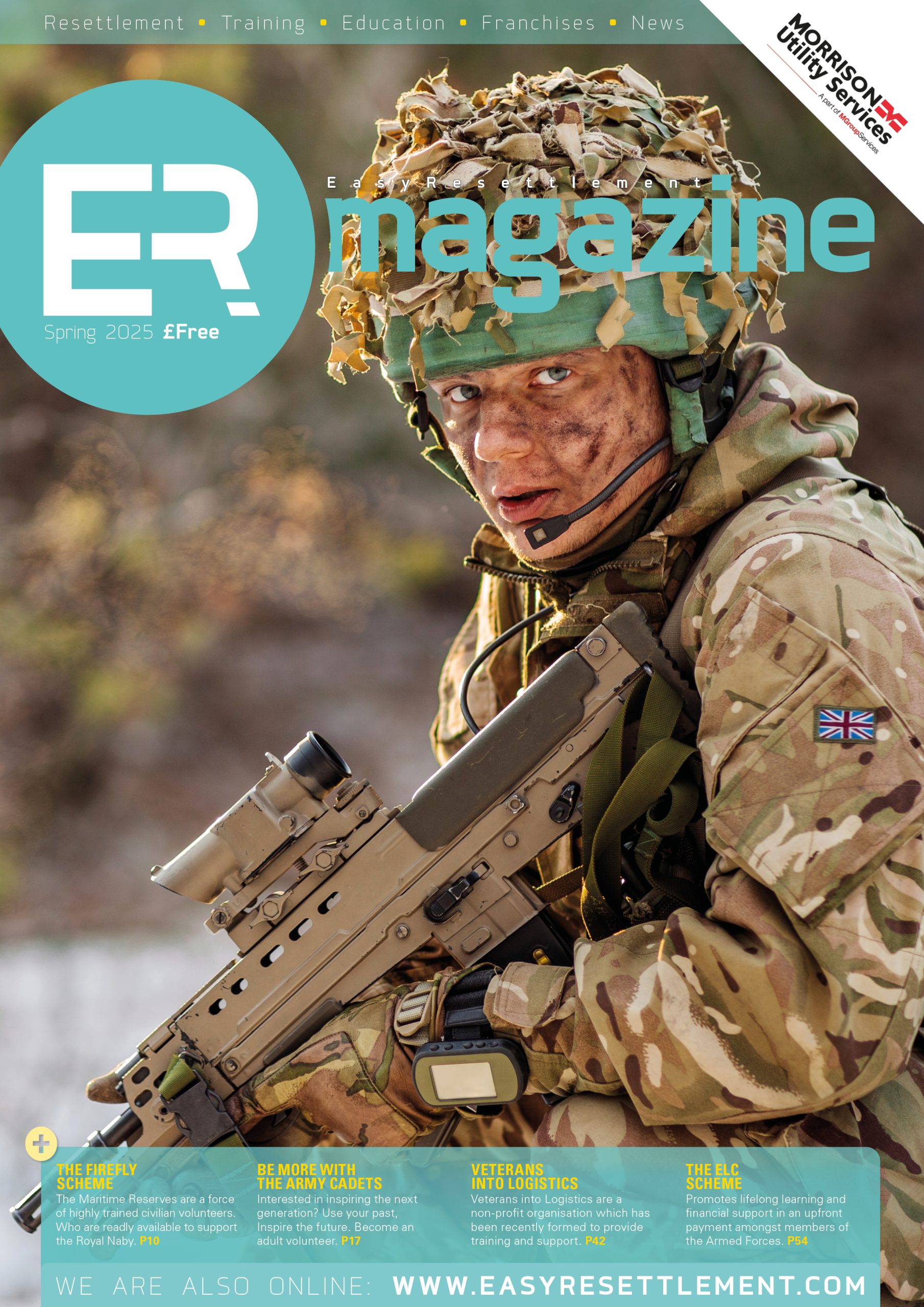Protecting others, a safe career choice
Protecting people from harm is the safety and health specialist’s purpose.
From large infrastructure projects and deep sea mining to crowd control and fire safety, it’s a role that has become absolutely integral to business and wider society. And it’s a career commonly pursued by ex-military.
We interviewed two veterans, former Company Sergeant Major and Warrant Officer Jimmy Quinn who served with the Scots Guards and Royal Electrical and Mechanical Engineers and ex-RAF Regiment gunner Scott Mathie, who chose two different routes into safety following careers in the armed forces.
Jimmy is now President of the Institution of Occupational Safety and Health (IOSH), the largest professional body for safety and health practitioners, and senior health and safety manager at global construction company Multiplex. Scott divides his time between being a firefighter and Managing Director of his own training and consultancy firm in Leicester, 1st Choice Safety, which is a forces friendly employer and signatory of the Armed Forces Covenant.
What prompted you to begin a career in safety?
Jimmy: I didn’t understand what health and safety was as a solider but I knew people who did it. Because I had spent some of my career as an instructor, and had the presen-tation skills, I wanted to put them to good use. I remember attending a health and safety course and sitting there, thinking, ‘I could do just as good a job as this instructor.’ I thought I could teach these courses.
Someone heard me talking about a course I had delivered on a conference call and said, ‘you should do this, teach the good word of health and safety’. That someone was Simon Donnelly, who is a veteran and an IOSH fellow and has mentored me since the begin-ning of my health and safety career.
Scott: The firefighting was always something I wanted to do. And it was the discipline of these two uniform services, the RAF and the fire service, and the thought processes that lent themselves to safety.
It is about the risk to benefit. If you were engaging the enemy, you would risk assess. Is this a risk worth taking? This mindset lends itself to firefighting, do you go into that burn-ing building? And so it is with the field of safety and health. The part of safety I specialise in, fire safety, benefits from my background in both the military and the fire service.
How, if at all, did a career in the military prepare you for a career in safety and health?
Scott: To put it simply, it’s just the discipline needed for both careers. It’s pointless put-ting something in place with safety if nothing gets followed through. Don’t just say you’re going to do it, you prepare and then you follow through as planned. Yes, you need to be someone who can handle the unexpected, but also someone who gets the value of planning well, and then being able to deliver.
Jimmy: It gives you a good understanding of hazards. Once you get to a certain rank, you tend to be more removed in peacetime from the action. You’re not constantly in the field using all the tactical skills. In a senior management career in the army, you have to undergo health and safety training. As a Company Quartermaster Sergeant, I was re-quired to attend a course, and that allowed me as to transfer to a Level 3 qualification in OHS. I then had an understanding of the practicalities of what safety and health man-agement systems were.
In the late ’80s and early ‘90s, there was more of an emphasis on health and safety in the military. The Health and Safety at Work Act started to come through and influence how we worked. Today, the army is looking to employ 75 health and safety advisors in the garrisons, and I would imagine other armed forces will replicate this going forward.
Further to that, what transferrable skills are there between the armed forces, or your particular role in the military, and safety and health practitioner or trainer?
Jimmy: You’re people facing. You’re able to interact. You have loads of soft skills, in-cluding communications and working part of a team. Safety, like the military, is about rec-ognising hazards and being able to make decisions. It’s about the ability to see the value of training and to create team working. You have to have the skills to assimilate into a team.
Scott: It’s about the organisational skills and the discipline. It’s about teamwork and ca-maraderie. In our line of work as safety trainers, we try not to come across as generalists. I need to be able to work with other safety experts who have their own specialisms, such as mental health or safety in construction. My current role is about building a team of specialists who can work together, and this has a lot of similarities with my RAF work.
What were the main challenges you faced in making the career transition?
Scott: One of the biggest challenges for me was imposter syndrome. A lot of people in the military come out and don’t think they can do anything else. You spend 25 years be-ing a trained soldier with a skillset that you think is quite specific. You don’t realise you have these transferrable skills that can help you to be successful outside the bubble of the military. You have a lot more to offer than you appreciate. It’s important not to forget that.
Jimmy: I only knew one language, the army language. I expected things to be done right now and very competently. I expected that I was working with people as professional, or more professional than me. Everyone would be thinking the same. You are, to a degree, institutionalised in the army and trained to think as one.
I had to create a new ideology in civvy street, because I had been in the army from the age of 17 to 42 and I knew nothing else. I had to do an apprenticeship as a civilian. It was very challenging mentally and emotionally. I cut myself off. But then I joined IOSH net-works and found other ex-military. I embraced that and found my way a bit. If I hadn’t have reached out, I would have become a lost.
What advice would you give to someone looking to make the transi-tion from the military to civvy street?
Jimmy: If you’re coming to the end of your full career, plan two to three years ahead. Reach out to veterans through the veterans network. Talk about what you feel you would like to do, and then start creating a plan up to the last day of service.
You need to look at utilising your resettlement grants properly. In this day and age, if you want to get into health and safety look at online courses. And use your resettlement leave perhaps to attach to local authorities or companies that would like your assistance as an ambitious, new health and safety advisor. Really think about the skills you’ve got from the armed forces, and try to use that trade as well.
Scott: One of the big things I would say is do your future planning while you’re still in the military. I didn’t make use of the courses. Get your head into planning before you leave and what’s available to you after your leave. Use your resettlement grants and make sure you take all the advice available on matters such as housing.
You come out of this protective bubble when you leave the military. I left home and went straight into the military, so I never had that life experience of being a civilian who had to find somewhere to live, find a dentist and a doctor etc. So think this sort of thing through in good time to be prepared for when you do leave.
Scott, how does it feel, setting up your own successful safety training company?
Scott: I spent the first few years of thinking I don’t know what I’m doing. Can I do this? I’ve not come from industry. These are the challenges. It’s just getting over those mental hurdles that you put there yourself. I don’t come from industry so I’ve never had to look at budgets and financial planning.
But in reality, I’ve taken quite a lot of comfort from working with other ex-military people who have been doing it longer than I have. There’s quite a good community of safety people who have come from the military. To anyone in the military looking for their next career, safety is an exciting career, it can be very diverse. And it’s a future-proof career. We will always go forward with health and safety.
Jimmy, tell us about becoming IOSH President. How are you using the position?
Jimmy: It’s a great honour, to become President of this leading body in health and safety. I want to use the position to increase the awareness of veterans in health and safety and to in-crease the awareness of veterans as a whole, including the mental health issues.
I’ve set up working groups within IOSH’s Council to create the detail surrounding these two issues, and we’re looking at creating an IOSH LinkedIn Group for veterans, which I hope your readers would join if interested in a safety career. This is a pre-cursor to build-ing more networking opportunities in health and safety for former military.
I also want to promote the younger safety and health professionals coming through, who see health and safety as a first career rather than second.
For more information about IOSH membership, training and the role of the safety and health professional, visit www.iosh.com
You can find out more about why 1st Choice Safety signed the Armed Forces Covenant at www.1cstc.co.uk/blog
Factfile
There’s a range of health and safety training courses and qualifications to choose from, and the right option will depend on the business and sector you’re working in.
High-risk industries will require more specific and advanced training to prepare workers for managing the hazards. However, there are various courses to kick-start your career in health and safety.
IOSH Working Safely or Nebosh Safety Simplified cover the basics of workplace health and safety, such as identifying risks in the workplace and advice on how to manage them.
For those who are looking to progress further, the next step up is to take a level 3 (or equivalent) qualification, such as IOSH’s Certificate in Safety and Health for Business or the Nebosh national general certificate in occupational health and safety. Completing these qualifications will also give the delegate the chance to apply for IOSH membership.

